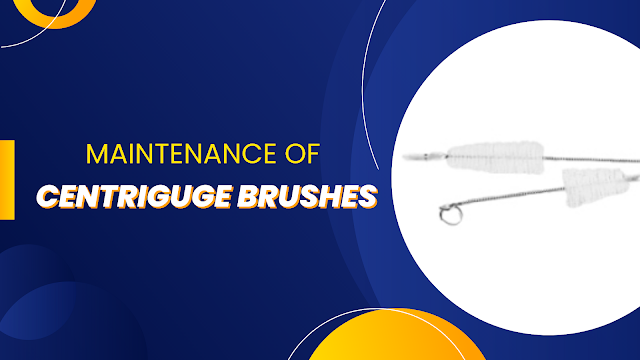Proper Maintenance of Your Lab Centrifuge!
Once you have invested in a lab centrifuge, you want to ensure it continues functioning effectively for as long as possible. Maintaining your device properly can help with that and ensure your safety and the seamless operation of your application. We look at how to keep your lab centrifuge in great shape through regular maintenance, such as cleaning with centrifuge brushes, etc., in this blog, including:
- Examining components for damage
- Getting regular maintenance done
- Lubricating and cleaning the apparatus
Let's take a deeper look at each of these.
Check for Damaged Parts
Periodically inspect the device for any indications of damage. It is not advisable to utilize damaged rotors, adapters, buckets, lids, tubes, or plates.
Here are some illustrations of what you might see:
- Parts exposed to salts, moisture, and harsh chemicals, such as the rotor and buckets, have corroded over time.
- There may be minor surface blemishes, cracks, or holes in the rotor or buckets.
- Damage to the lid gasket
Additionally, watching for any issues while the centrifuge operates is crucial.
Cleaning & Lubrication of the Unit
Maintaining a clean centrifuge can extend its useful life and reduce the chance of sample contamination. Here is a very general list of things to do. Consult your manufacturer's manual if you need clarification on the cleaning agents and procedures to follow for a particular part.
Choose whether you will clean the centrifuge monthly, daily, or more frequently, depending on your application. Additionally, you'll need to clean it up after spills.
- Clean the rotor and its accessories individually after removing them.
- Use a disinfectant spray or an autoclave to clean parts.
- Thoroughly wash and rinse the bowl.
- Be careful to avoid overflowing the centrifuge.
- A soft cloth or sponge is usually better because abrasive goods like steel wool and wire brushes can harm some materials, especially coatings.
- Clean the outside of the device and any non-removable components, such as the lid, seals, control panel, and case, with warm water, a light detergent, and centrifuge brushes.
- Remove any accumulated moisture by wiping. This puts pressure on the system because it can freeze and limit airflow around the rotor.
- If necessary, use a test tube brush with a non-metallic tip to clean the cavities of the tubes.
- If there is a water tray, empty and clean it.
- To prevent corrosion, coat metal rotors with oil.
- Lubricate the centrifuge's working parts by the manufacturer's instructions.
Regular Service is Mandatory
To prevent metal fatigue, you should be conscious of how long your rotor is covered. Service the centrifuge at least once a year or more frequently for used units. Additionally, it is critical to get the device calibrated every year or every six months if it's worn for six or more hours each day to ensure accurate readings.




Comments
Post a Comment